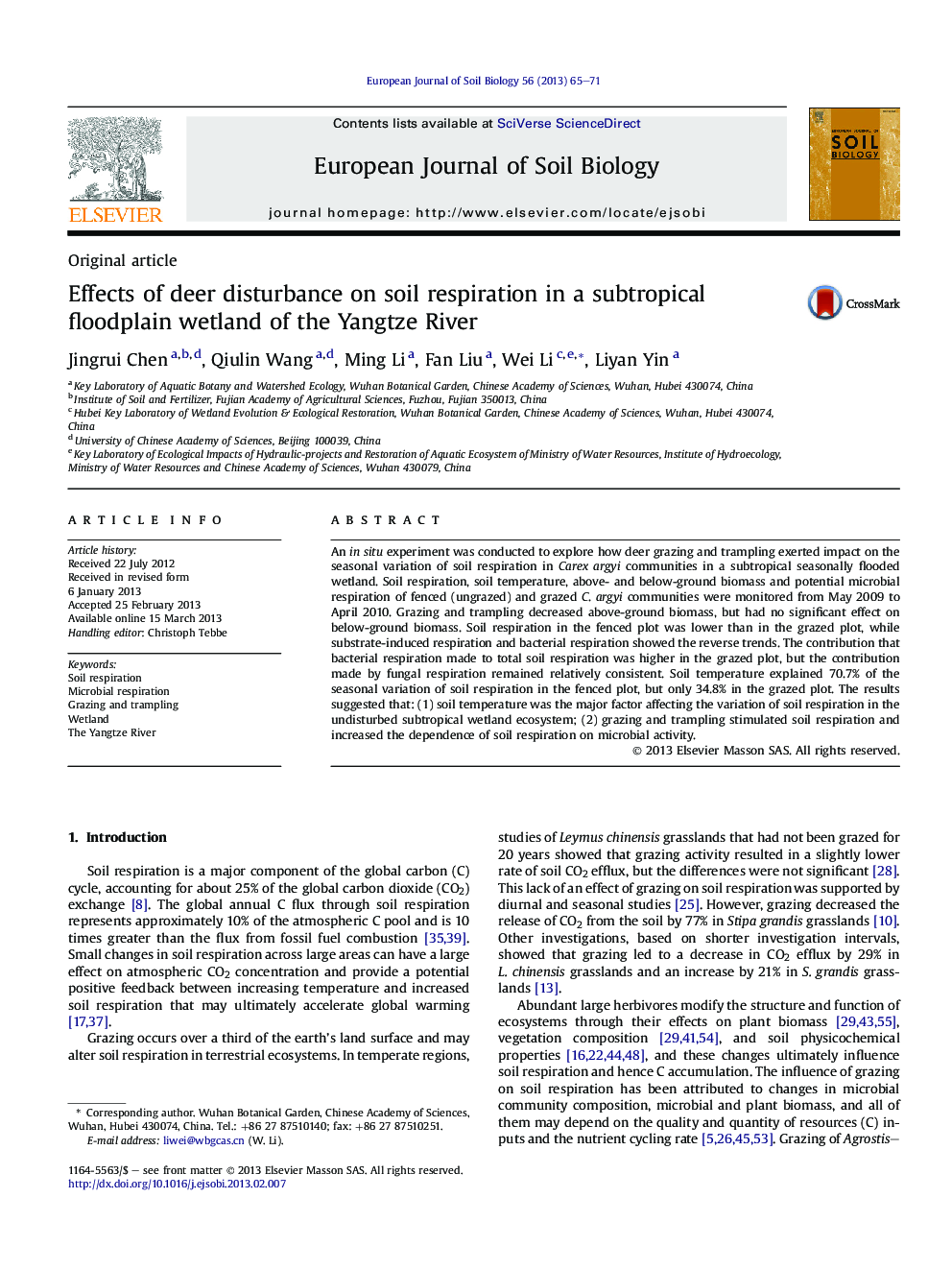| Article ID | Journal | Published Year | Pages | File Type |
|---|---|---|---|---|
| 4392009 | European Journal of Soil Biology | 2013 | 7 Pages |
An in situ experiment was conducted to explore how deer grazing and trampling exerted impact on the seasonal variation of soil respiration in Carex argyi communities in a subtropical seasonally flooded wetland. Soil respiration, soil temperature, above- and below-ground biomass and potential microbial respiration of fenced (ungrazed) and grazed C. argyi communities were monitored from May 2009 to April 2010. Grazing and trampling decreased above-ground biomass, but had no significant effect on below-ground biomass. Soil respiration in the fenced plot was lower than in the grazed plot, while substrate-induced respiration and bacterial respiration showed the reverse trends. The contribution that bacterial respiration made to total soil respiration was higher in the grazed plot, but the contribution made by fungal respiration remained relatively consistent. Soil temperature explained 70.7% of the seasonal variation of soil respiration in the fenced plot, but only 34.8% in the grazed plot. The results suggested that: (1) soil temperature was the major factor affecting the variation of soil respiration in the undisturbed subtropical wetland ecosystem; (2) grazing and trampling stimulated soil respiration and increased the dependence of soil respiration on microbial activity.
► Soil respiration was accelerated by deer disturbance in a subtropical wetland. ► Deer disturbance reduced the temperature dependence of soil respiration. ► Bacterial respiration played a critical role in improving soil respiration.
